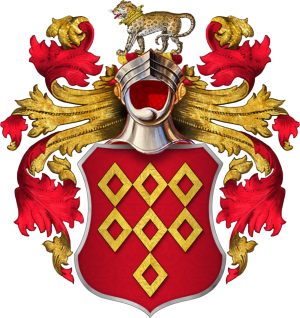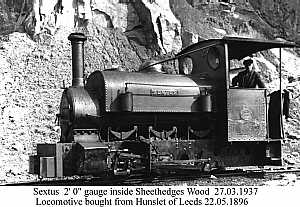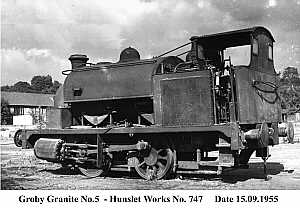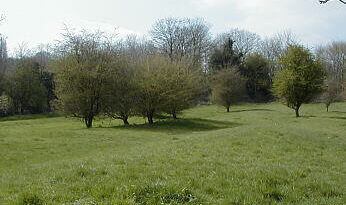The Groby Granite Railway
In 1825 the 6th Earl of Stamford and his Leicestershire estate agent Robert Martin went to the opening of the Liverpool and Manchester Railway. Both the Earl and Robert Martin recognised the possibilities and potential of a railway at Groby to take granite from the village quarry (Now the Druck industrial premises Fir Tree Lane) and into Leicester. Granite was needed in large quantities by John Macadam, who was in charge of building and improving the roads within the City of London at this time.
George Stephenson and his son Robert came to Groby and advised the Earl and his agent on how a line might be engineered alongside the Ratby Road and onwards across the fields to Glenfield. The Leicester and Swannington Railway opened officially on July 17th 1832 but the Groby granite railway was completed prior to this date. In fact Thomas Chaplin was given the order to supply granite setts to the Leicester West Bridge Wharf, by the railway at 4/- per ton. The firm understanding being that the work had to be completed by 18th May 1832.
The official opening day of the Leicester and Swannington Railway was 17th July 1832. That same evening the 0-4-0 steam locomotive ‘Comet’ of the LS&R returned to Groby after the festivities to collect twenty-four wagons of Groby granite. By January 1833 nearly one thousand tons of granite were being transported from Groby to Leicester West Bridge per month. The granite was then transferred into canal barges and taken to Macadam’s storage depots around London.
The c1832 Groby granite quarry did not use steam locomotives. There was a winding system driven by a stationary steam engine by the side of the Ratby Road and loaded wagons were drawn from the village quarry up hill to the level area opposite what is now Victoria Cottages. Once a certain number of wagons had been assembled two horses were carried down with the full wagons to the Groby Granite sidings which were alongside the Leicester and Swannington Railway near Glenfield. The loaded wagons travelled from Groby down hill under their own loaded momentum under the watchful eye of a brakes-man. Once at the sidings empty wagons were drawn by the horses back to Groby. The loaded wagons were collected by the Leicester and Swannington Railway locomotives later in the day.
Pairs of canal boats transported the granite onwards to London from West Bridge. Problems frequently arose however and West Bridge soon became ‘ glutted with coals and granite’ according to the L&SWR inspectors in May 1833. The winter months brought more problems if the canals froze over. In 1837 John Martin – son of Robert Martin the Bradgate estate agent – who was in charge of all the transport arrangements reported that he had twelve pairs of boats and upwards of one hundred men busy making preparations for the boats to move at the first sign of a thaw.
The Groby granite sales were to be directly affected by the Midland Counties Railway reaching Leicestershire in 1840. Mountsorrel granite quarry was linked to the new line and within three years the order book at Groby decreased to such a degree that it was decided to operate the granite quarry for the Bradgate estate needs and local orders only. In transporting the Groby granite to London by canal boats the length of time to be allowed was three weeks. Mountsorrel granite quarry, linked through Rugby to London was in a position to supply on the day an order was received. Until a rail link was established linking Groby to London in the same way there was no way that Groby could compete on equal terms. John Martin had by 1843 taken up the lease on the Mountsorrel granite quarry.
The Leicester & Swannington railway was later joined to the Midland railway at both Knighton (south of the Leicester railway station) and Burton upon Trent but this was not until August 1849.
Groby Granite Co. Ltd was not formed until 1865. The new company issued shares with each share having a value of £10.00. The Rt. Hon. Earl of Stamford & Warrington is recorded as purchasing 368 shares, Henry Hall (the Earl’s Leicestershire Estate Manager) 213, George Harrison, Haymarket, Leicester 200, Henry Nuttal, Surgeon, Leicester 150, A.J. Payne, Oughbungton Hall (Lymm, Cheshire) Needham Shelton, butcher, Belgrave Gate, Leicester 122, Thomas Hall, Newarke Street, Leicester 100. Others are listed as Samuel Odames, Mrs Wildes, 7 Princess Gardens, South Kensington, Benjamin Burrows, Factory manager, Henry Flude, Coal merchant, Red Roofs, Cropston and Mr Brown, Innkeeper, Leicester. The new company re-instated the old railway lines and by 1870 business had increased to such a degree that moving railway wagons with horses was proving very difficult with increasing orders and was really no longer an option.
Locomotive No 1 was purchased from Hunslet of Leeds and delivered to Groby by way of the canal system in July 1870. By 1893 the number of locomotives from Hunslet had increased to four, works numbers 38, 97, 515 & 588. All were 4′ 8″ gauge and 0-4-0 saddle tank locomotives. The village quarry was by 1880 almost worked out and moving the working face to the north or south was impossible due to dwellings alongside the Markfield Road northwards and allotments to the south. The decision to move the quarry location down to what is now known as Sheet Hedges quarry, opposite Groby Pool appears to have been taken at this time. By 1893 a decision to use small 2′ 0″ gauge locomotives to take the granite from the working face to the crushing machines was taken. The first two small locomotives called ‘Junior’ and ‘Sextus’ were delivered in May and October of 1893.
The numbering, rather than naming, of the larger 4′ 8″ locomotives continued and Groby Granite No5, Hunslet works No 747, was delivered in 1901. In 1909 a large 4′ 8″ 0-6-0T locomotive was delivered to Groby from Hunslet, works No. 978 This was called Groby No1, having replaced the original c1870 locomotive. This large loco’ was often used to pull the Sunday School special once a year between Groby, the Glenfield sidings and back to Groby for a tea party.
Although fondly remembered it frequently came off the rails, largely due to the coupled 0-6-0 wheel arrangement being so inflexible and the fact that the Groby Granite Railroad was almost totally formed of ancient second hand rails, chairs and sleepers bought from the main line railway companies!
The 0-6-0 was serviced by Hunslet and sold on to Ocean United Collieries, Risca in 1936.
After 1909 three more smaller locomotives were added to those already working inside Sheethedges quarry. ‘Nonus’, Hunslet works No. 992 arrived in 1909 and ‘Sextus’ Hunslet No. 1021, presumably replacing the earlier locomotive of that name arrived in 1910. The last small loco’ called Junior, again replacing the earlier locomotive arrived in 1921 – Hunslet No. 1417. The last 4′ 8½” locomotive arrived in 1915 and also became the last locomotive to work at Groby being scrapped in March 1966.
Once the second world war was over surplus war department road vehicles were used increasingly to move granite and other road making materials and the railways less so. The late smaller locomotives used in Sheet Hedges quarry were scrapped between 1945 and 1947 – unfortunately they just missed the slightly later public interest in saving locomotives of this type. A Fowler diesel locomotive was tried at Groby in the 1960’s and worked for 18 months before being sold to Croft English China Clay Co in December 1968. The Groby Granite railway track was lifted in 1967.
Little remains within Groby village to indicate how even one railway once operated within the village. The best preserved stretch of the former railway line is now a footpath. It starts at Oaktree Close and skirts Cowpen Spinney running along the former railway line towards Glenfield.





